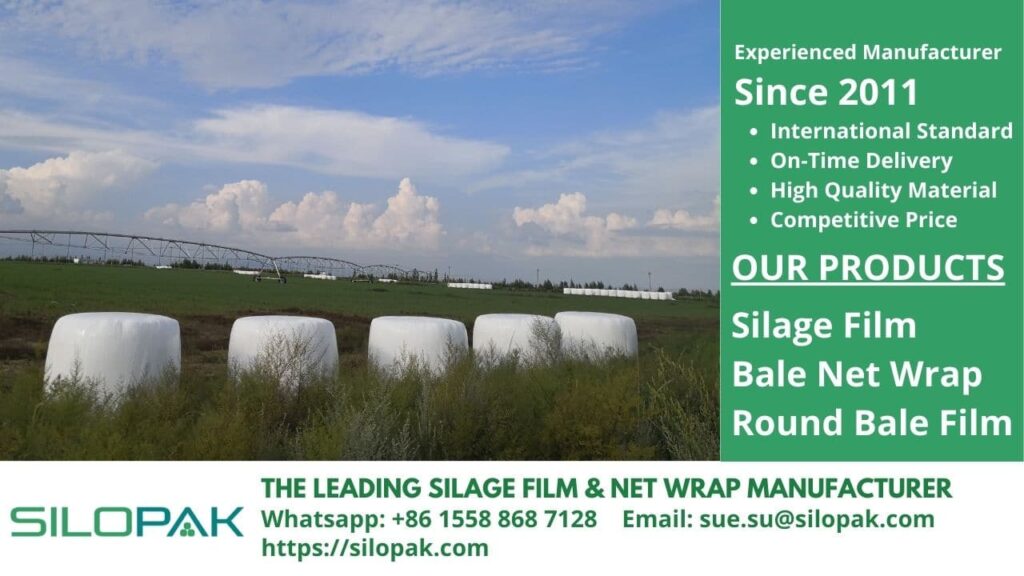
Legumes are the best source of quality protein for livestock. You can harvest all types of legumes such as beans, peas, and lupines as whole plants for fermentation. You need legume silage as a means to preserve this good quality protein source at an economical cost. Each legume has a different harvest time. The harvest time significantly affects the yield and nutritional quality of the resulting legume silage. A farmer uses legumes to get high-quality protein for his livestock.
contents
Why Do So Many People Use Legume Silage?
Whole plant legumes can be grown together with small grain crops or whole plant cereals. This will make it easier for you to ferment. Dual crop systems using legume silage and spring-grown cereal crops have been around for years. This planting system is sure to optimize starch and protein in silage. You can also get different harvest windows from this dual cropping system. Furthermore, legume silage can also provide residual soil nitrogen which is used for subsequent crops such as cereals or grasses.
To prevent protein loss in silage fermentation, farmers must apply their practice of legume silage.
Legum Silage Shrinkage
Shrinking legume silage often occurs during months of storage. When the silage shrinks, the availability of the amount of forage decreases along with the quality of the silage. The quality of silage includes valuable nutrients such as soluble protein, sugar, and starch. You will end up getting only low concentrations of nutrients like ash and fiber.
Losses due to the shrinkage of the legume silage occurred during the initial fermentation or active ensiling and aerobic decay. However, you can prevent losses due to the shrinkage of silage besides this in the initial fermentation in simple ways as follows:
- Quickly fill the silage to ensure that air exposure is not too long.
- Pack the silage as quickly and tightly as possible. Then, you can close it and seal it as soon as possible.
- Don’t forget to always use forage plants that have been proven through many studies. Forage plants such as legume silage contain naturally good and bad microorganisms. Good microorganisms in silage include lactic acid-producing bacteria that function to destroy plants. These live bacteria are often combined with enzymes to increase fiber digestibility and increase the content of soluble sugars that are closely related to good bacteria. If you do this, the initial fermentation will occur quickly and efficiently. You can also inhibit aerobic spoilage, which will spoil the legume silage.
Rhizobium Bacteria on Legume Root Nodules
Among the advantages of using legume silage is that you can get high protein, reduced feed concentrate costs, reduced need for artificial fertilizers, good atmospheric nitrogen fixation, and high production per hectare. Organic farmers like to use legume silage for several reasons; they can use plant species ranging from lotus bird feet, green peas, white clover, red clover, lupine, beans, sainfoin, and lucerne.
These plant species are closely related to the rhizobium bacteria that live in the root nodules of legumes. These bacteria can fix atmospheric nitrogen, making it sufficiently available to plants. That is why organic farmers need legumes because they can leave nitrogen for the soil to be used in subsequent plantings.
The legumes preservation method is the same as grass silage. Legume silage can be rolled in the same way as treating grass and corn. With current technological advances, the legume ensiling process can be assisted by the use of a lawnmower conditioner with rubber rollers so that at least 30% to 45% dry matter can help make the plant easier to ferment. Being able to store legume silage for months to come can increase the protein value in animal feed, especially in difficult conditions during summer.
The Importance of Protein in Livestock Production
Can you imagine if your livestock lack protein in their daily intake? The immune system, reproductive function, and the activity of the mammary glands, organs, and other vital systems will not function properly. Livestock will look lethargic and decreased appetite, and in the end, they will be attacked by various diseases. Ruminants need at least more than 7% protein intake in their diet to grow optimally and support the activity of rumen microorganisms.
Cells in the mammary glands will absorb amino acids for the synthesis of milk protein. When these livestock lack protein content, the production of milk protein will decrease. If the cow becomes pregnant, she will give birth to a weak calf as long as she is fed a low protein diet.
Sometimes farmers have a little difficulty in providing protein sources. They are faced with the absence of equipment, fuel, labor, and minimal production costs. Eventually, breeders will cultivate mature cattle to graze low-quality forage and offer mouse-based supplements containing urea. Substituting natural protein sources can have an impact on the pregnancy rate of heifers.
You should switch to legume silage where this preserved feed offers high protein, and it’s economically easy to make it. You can rely on the silage film from a trusted leading manufacturer Silopak. Our silage films have been proven to be able to help farmers in preserving their natural food throughout the year. We have sold many silage films since 2011 to many countries.

